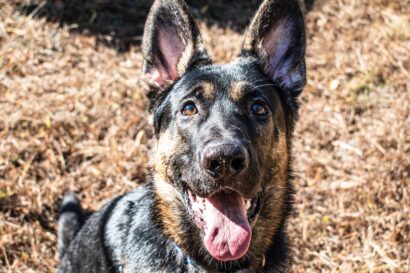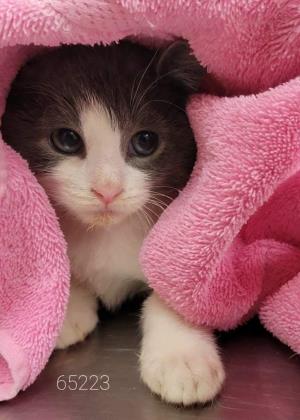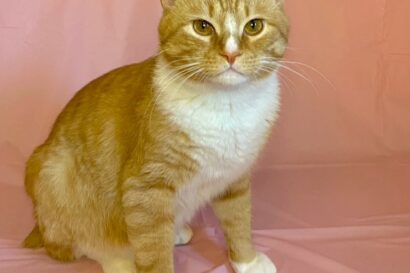
2022 is the Year of the Tiger in the Chinese zodiac, and for those of us who have a love of our feline friends – the domestic cat – we may “paws” to think about how similar they are to the large wild cat. It’s no wonder. Our precious felines have certain behaviors and characteristics that do, indeed, resemble these magnificent large wild cats in some ways. They pounce. They chase. They “roar” (well, sort of). They hunt. And certain domestic cat breeds actually look like a big wild cat.

Studies have been done to get to the bottom of this. Are our sweet little felines actually descendants of, or did they evolve from the Great Tiger? In 2013, an international team of scientists sequenced the genomes of tigers, lions, and snow leopards, with the aim of preserving the iconic felines. They discovered that the biggest and perhaps most fearsome of the world’s big cats, the tiger (specifically the amur Tiger), shares 95.6 percent of its DNA with our cute and furry companions. (Christian Science Monitor). Another study done in 2007 shows that the DNA from the African wildcat (a smaller wild cat – Felis sylvestris – which means “cat of the woods”) was virtually indistinguishable from the DNA of our domestic cats. The Smithsonian found that cats were first domesticated in the Near East, and some of the study authors speculate that the process began up to 12,000 years ago. Whenever or however it happened, cats have evolved to become treasured members of our families and enjoy living comfortably with their human companions.
For some cats, however, this may not be the case. These are the feral cats – those who have in some ways reverted back to being more like their wild ancestors. Feral cats can be integrated into homes or other domestic situations with special care and management. Cats that are left to fend for themselves for generations begin to take on more “wild cat” behaviors. Because they are predisposed genetically to the behaviors of their wild cat ancestors, they become survivalists. Their natural ‘fight or flight’ instinct is much stronger than our house cats because they are in constant observation of their surroundings to ensure their safety.

Monadnock Humane Society has been working with feral cats for decades and most recently learned of a colony of more than 100 feral cats in the region. Beth Doyle, MHS Humane Agent, was there on the scene several months ago to assess the situation. When she first arrived, she didn’t know what to expect. She found that the cats were all in a nice, seemingly peaceful co-existence. “The cats, while plentiful in quantity, all appeared to be in good health. It was clear from the start that they were being well fed by the property owners, and had established routines with everyone on the property.” While it appeared that they were doing fine and had food and shelter, these cats needed human intervention as they rely on a human-based food source. And, without medical treatment, infections can run rampant within these colonies and diseases can spread throughout the community. Also – a colony of over 100 cats can easily turn into thousands in a short time and can cause ecological damage. MHS made the decision to humanely trap all of them over many weeks, working with the property owners. Once the cats and kittens had all been trapped and had their medical needs tended to (they all were spayed/neutered, received vaccinations and a Felv test and were microchipped), Beth and her team began the process of evaluating which cats have the potential to be adopted into homes, and which cats would be more comfortable as a barn cat.
Staff coordinated with a team of foster families to care for the nearly 40 kittens who have a much better chance of being integrated into a home than those who are older and more set in their wild ways. For the most part, these feral kittens may remain shy and only bond with other cats. “Years of genetics passed down in feral communities make for a longer behavior modification program for some kittens, but with the right set up, we are able to make many of these kittens into semi- ‘normal’ cats,” Doyle said. They grow up into cats that are not feral, meaning they don’t always make every effort to run away from you, but they are also not the cat that most people are used to. We call them “Spirit Cats.” Others may evolve into warm friendly cats who enjoy human companionship. It is important to note that these are not every day kittens and will need more time and patience to transform into well-socialized felines.
The Year of the Tiger is cited as one of hope…generosity is an all-time high, and there’s a spirit of enthusiasm and adventure. All of us at MHS thank you for the help you gave us as we navigated the process of helping these cats and kittens. As of this writing, nearly all of them have been placed in loving, understanding homes or barns. If you are interested in learning more about the work MHS does in the community and the programs and services offered, we invite you to follow us on social media or sign up for our e-newsletter, or visit our website – www.monadnockhumanesociety.org. Thank you for your support of the work we do!


